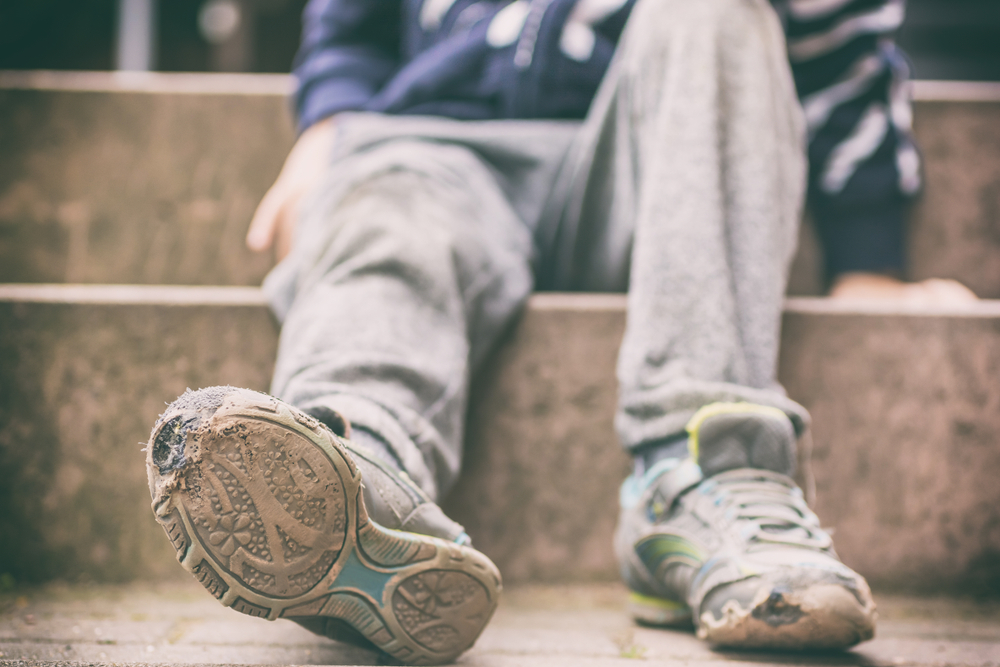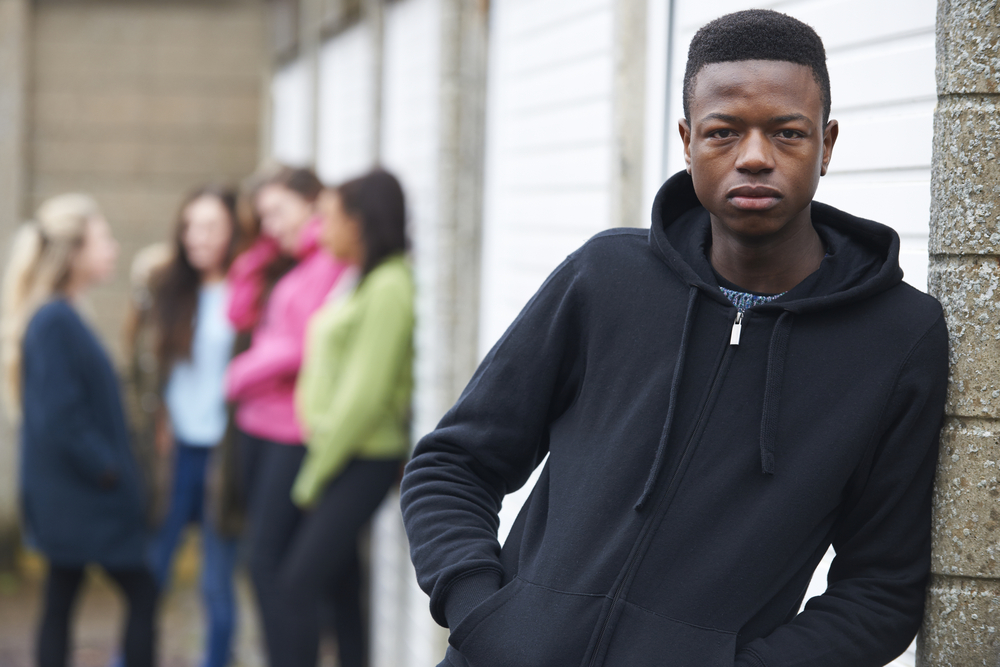focus on young people’s perceptions?

There is a growing body of research examining the relationship between income inequality and mental health. Overall, these studies show that increased income inequality can have negative impacts on individuals’ mental health and well-being (see Fitzsimons et al., 2016 and Remes et al., 2019).
Poverty and income inequality are among the most prevalent social and political issues of our time. According to analysis by the Child Poverty Action Group (CPAG), there were 3.9 million children living in poverty in the UK in the year 2020-21 (CPAG). There is growing recognition that income inequality and poverty are toxic to young people’s mental health. This is reinforced by research which finds that children from the poorest 20% of households are four times as likely to experience mental health problems by the age of 11 as those from the wealthiest 20% (Gutman et al., 2015). Emerging evidence also suggests that the Covid-19 pandemic and the rising cost of living has driven people into poverty and is increasing financial pressures faced by those who were already struggling.
This study by Piera Pi‐Sunyer et al. (2023) contributes to the evidence base by exploring the relationship between perceived income inequality relative to their friends and poorer mental health outcomes in early adolescence. The study used data from a representative sample of UK adolescents and found that there was an association between higher levels of perceived income inequality and poor mental health among adolescents.

There were 3.9 million children living in poverty in the UK in 2021. There is an association between higher levels of perceived income inequality and poor mental health among adolescents.
Methods
The study is based upon analysis of the UK Millennium Cohort Study, a large representative survey of children born between 2000-2002 (N=19,517). A sample of those who provided data at ages 11 and 14 were selected for analysis (N= 12,995). At age 11, respondents were asked questions about perceived income inequality, such as whether they perceived themselves as richer, poorer or the same as their friends.
The data was then analysed using latent change score modelling (LCSM) to determine the mean and examine changes in outcomes in mental health and other interpersonal difficulties such as wellbeing, self-esteem and bullying at age 14.
Results
Researchers found that perceived income inequality among friends (PIIAF) at age 11 accounted for variance in their mental health and interpersonal difficulties trajectory independently from objective family income. The authors suggest that experiencing both absolute and relative poverty could therefore constitute a ‘double disadvantage’.
Adolescents who perceived themselves as belonging to poorer families compared to their peers at age 11 were more likely to report worse mental health outcomes, wellbeing, self-esteem, and interpersonal difficulties than those who saw themselves as richer or equal to their friends. They were also more likely to report higher levels of externalising problems.
However, between ages 11 and 14, adolescents who perceived themselves as poorer reported a decrease in bullying victimisation compared to adolescents who perceived themselves to be richer or equal to their peers.
Perhaps unsurprisingly, overall, the study found that those who saw themselves as belonging to families equal in wealth to their friends reported the best outcomes.

Adolescents who see themselves as belonging to poorer families compared to their peers were more likely to report worse mental health outcomes compared to their peers who saw themselves as equal.
Conclusions
Overall, the paper concludes that perceived income inequality among friends during early adolescence may compound the harmful effects of economic disadvantage on mental health and wellbeing during this period. This group were more likely to report these adverse consequences than those who saw themselves as equal in wealth to their peers.
These findings are in line with previous studies demonstrating the links between uneven wealth distribution within communities and poor outcomes for young people as highlighted in the paper (See Elgar et al., 2015, 2019; Pickett & Wilkinson, 2010, 2007).

This research concludes that perceived income inequality among friends during adolescence may amplify the harmful impact of economic disadvantage on mental health.
Strengths and limitations
This report is a positive contribution to the evidence base on income inequality and young people’s mental health. There are a number of strengths in the study such as the use of a large, representative, and contemporary dataset, the selection and use of suitable indicators relevant to the study’s hypotheses, and the robust application of latent change score modelling. The use and focus of adolescents’ own subjective experiences of perceived income inequality in relation to their mental health is also a very welcome and insightful contribution.
There are limitations within this study that the authors themselves acknowledge, particularly in relation to the use of perceived income inequality among friends (PIIAF) as a measure. One of the challenges the authors identify is that “PIIAF might not perfectly capture changes in inequality, for example, how much poorer an individual feels compared to their friends.” Another limitation relating to the dataset was that PIIAF data was not collected at age 14, therefore the authors could not examine whether trajectories were different across groups.
Other possible limitations associated with this study are the use and reliance on self-reported measures as these can be subject to biases such as social desirability bias, so the findings should be interpreted with some caution. In addition, we know that some groups of children and young people are disproportionately impacted by income inequality, for example, children from Bangladeshi and Pakistani backgrounds are most likely to live in low-income households out of all ethnic groups (Office for National Statistics, 2020). The study could have explored differences in PIIAF and outcomes based on different socio-demographics such as ethnicity or location.
Summary
- The report helps to further the evidence base on the effects of income inequality on young people’s mental health using a large and representative dataset.
- One of the main weaknesses of the study is the use of perceived income inequality as a measure, as it does not provide insights on how much poorer an individual feels and differences in impact.
- The study could have also explored differences in perceived income inequality and outcomes within different socio-demographic groups.

The study could have also explored differences in perceived income inequality and outcomes within different socio-demographic groups.
Implications for research, practice, and policy
This study highlights the need for researchers, policymakers, and practitioners to consider the potential impact of income inequality on young people’s mental health and well-being. The findings also emphasise to me that young people’s own perceptions matter greatly, particularly their perceived sense of self and status compared their peers, perhaps just as much as their actual household income.
Addressing income inequality and promoting greater equality overall may help to improve outcomes and reduce the burden of mental health problems in this population. However, one of the major challenges we face in society is the general reluctance to accept (at a political and leadership level) that mental health interventions should go beyond therapeutic services. Multi-level action to eliminate poverty and income inequality is one of the most crucial steps that can be taken, particularly in today’s current climate.
Below I outline some of the wider steps those in research, policy, and practice can take:
Research
The report’s authors suggest that “future longitudinal research should investigate how PIIAF trajectories are related to the salience of economic inequalities in proximal social environments and their relationship to belonging in young people.” In addition to this, future studies should explore the experiences and differences in outcomes of young people based on their socio-economic background and other relevant characteristics.
Practice
The report’s authors recommend “future work should explore whether decreasing the salience of inequalities in UK school environments could foster belonging in young people (e.g., providing guidance for parents as is common in some Scandinavian cities”. Schools should develop poverty reduction strategies with pupils, families and communities and incorporate this within a whole school approach to mental health and wellbeing.
Policy
The report calls on policymakers to “understand how uneven distribution of wealth in schools and other proximal environments (e.g., gentrification) presents a risk factor for belonging in young people.” Governments should take steps to raise the income of the poorest by increasing social security payments, such as child benefits and scrapping the two-child benefit limit. Data should also be collected on children and young people’s subjective experiences of poverty and income inequality, for example, as part of Department for Education’s annual State of the Nation reports.
In summary, the findings of this study have important implications for addressing the mental health challenges facing adolescents today. By mitigating and addressing the impact of income inequality on young people, we can work to create more equitable and supportive environments that promote good outcomes for all.
Summary
- The study highlights a number of implications for research, policy and practice. This includes the need for future studies to look at how PIIAF trajectories differ between groups over time and their links to mental health and belonging.
- School settings are also well placed to tackle the possible impact of perceived income inequality by promoting belonging and mental health.
- Policymakers should better understand the uneven wealth distribution and its impact on young people and take steps to better measure and address child poverty.

One of the major challenges we face in society is the general reluctance to accept (at a political and leadership level) that mental health interventions should go beyond therapeutic services.
Links
Primary paper
Piera Pi-Sunyer, B., Andrews, J.L., Orben, A., Speyer, L.G. and Blakemore, S.-J. (2023), The relationship between perceived income inequality, adverse mental health and interpersonal difficulties in UK adolescents. J Child Psychol Psychiatr, 64: 417-425. https://doi.org/10.1111/jcpp.13719
Additional references
Child Poverty Action Group, Child Poverty Facts and Figures. Available from: https://cpag.org.uk/child-poverty/child-poverty-facts-and-figures#footnote1_95t2mfa
Elgar, F.J., Gariepy, G., Dirks, M., Walsh, S.D., Molcho, M., Cosma, A., … & Craig, W. (2019). Association of early-life exposure to income inequality with bullying in adolescence in 40 countries. JAMA Pediatrics, 173, e191181.
Elgar, F.J., Pfortner, T.K., Moor, I., De Clercq, B., Stevens, ¨ G.W., & Currie, C. (2015). Socioeconomic inequalities in adolescent health 2002–2010: A time-series analysis of 34 countries participating in the health behaviour in schoolaged children study. The Lancet, 385, 2088–2095.
Fitzsimons, E., Goodman, A., Kelly, E., & Smith, J. P. (2017). Poverty dynamics and parental mental health: Determinants of childhood mental health in the UK. Social Science & Medicine, 175, 43-51.
Morrison Gutman, L., Joshi, H., Parsonage, M. and Schoon, I. (2015) Children of the new century: mental health findings from the Millenium Cohort Study. London: Centre for Mental Health.
Office for National Statistics (2020) Child poverty and education outcomes by ethnicity. Available here: https://www.ons.gov.uk/economy/nationalaccounts/uksectoraccounts/compendium/economicreview/february2020/childpovertyandeducationoutcomesbyethnicity [Last accessed 09/03/23]
Pickett, K.E., & Wilkinson, R.G. (2007). Child wellbeing and income inequality in rich societies: Ecological cross sectional study. BMJ, 335, 1080.
Pickett, K.E., & Wilkinson, R.G. (2010). Inequality: An underacknowledged source of mental illness and distress. The British Journal of Psychiatry, 197, 426–428.
Remes, O., Lafortune, L., Wainwright, N., et al. (2019) Association between area deprivation and major depressive disorder in British men and women: a cohort study. BMJ Open 2019;9:e027530.
Source link
#focus #young #peoples #perceptions

